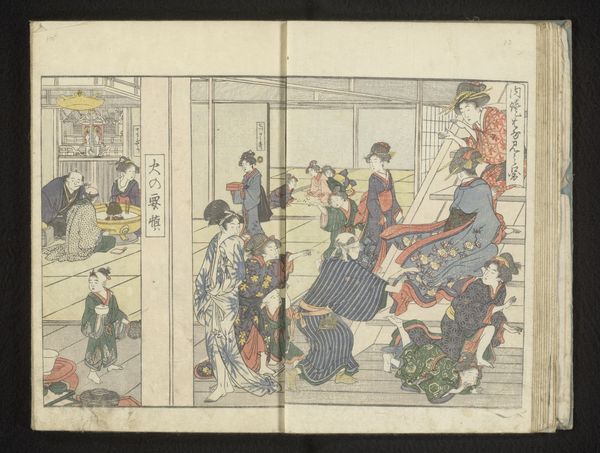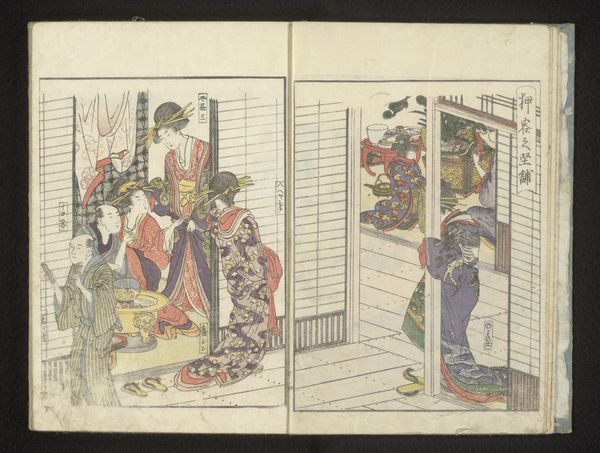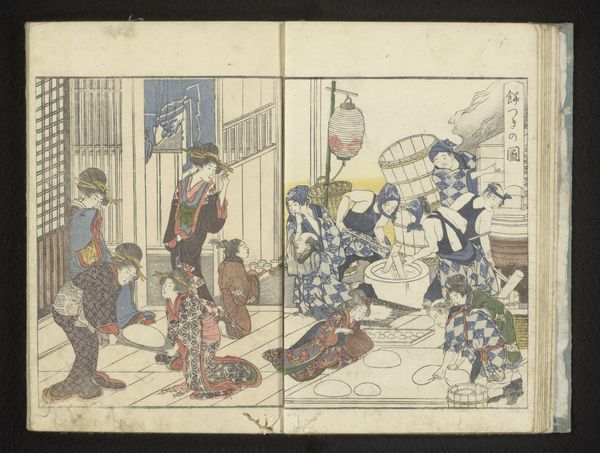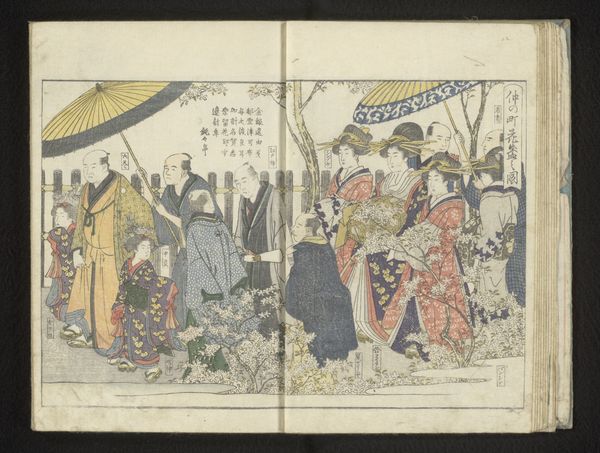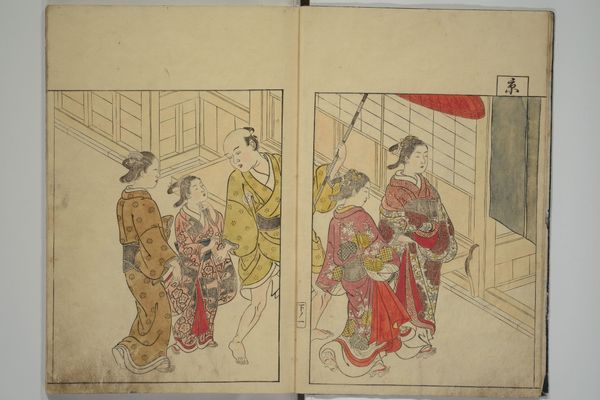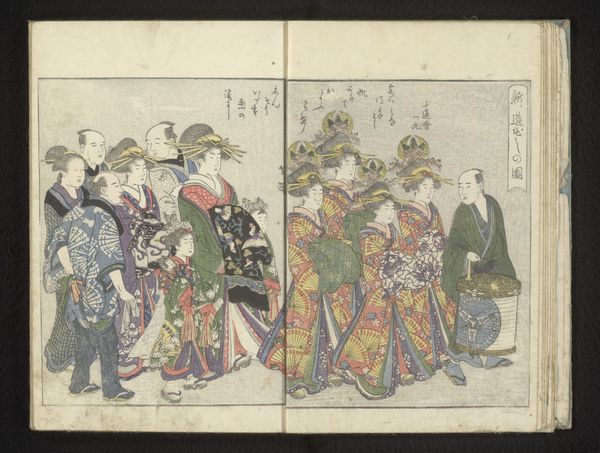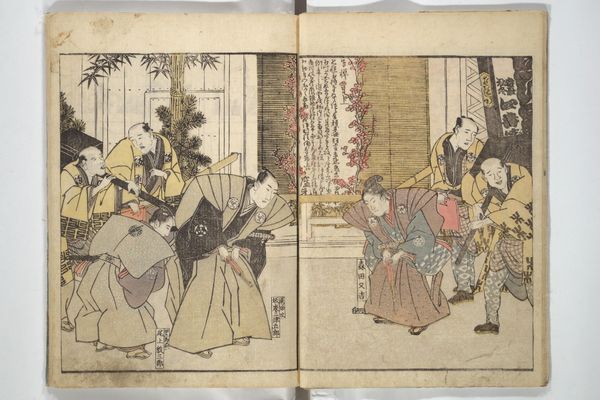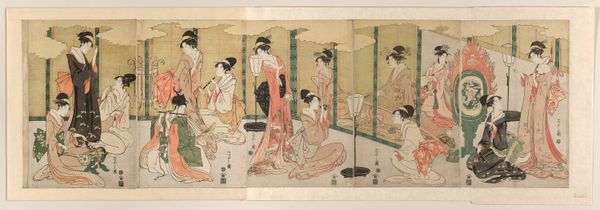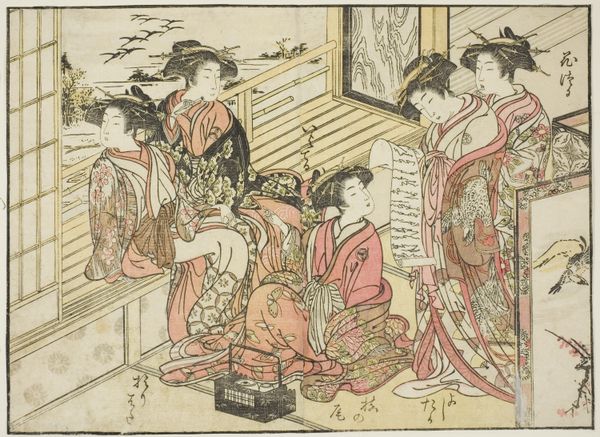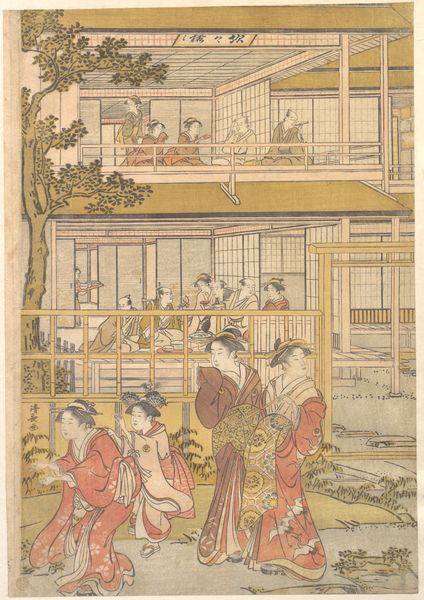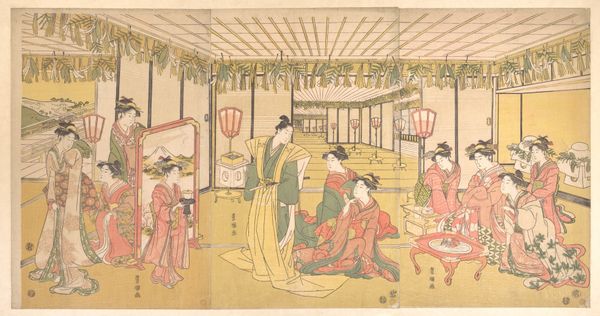
print, woodblock-print
#
portrait
#
16_19th-century
# print
#
asian-art
#
ukiyo-e
#
figuration
#
woodblock-print
#
genre-painting
Dimensions: height 224 mm, width 158 mm
Copyright: Rijks Museum: Open Domain
Curator: Let's have a look at this intriguing piece titled "Stoet mensen in een kamer naar binnen kijkend," which roughly translates to "A Procession of People Looking into a Room," created in 1804. It is currently held at the Rijksmuseum. The work is a woodblock print by Kitagawa Utamaro, a master of the ukiyo-e style. What do you think of this artwork, at first sight? Editor: It feels a little voyeuristic, doesn't it? So many people, their faces so curious, peeking into some unknown room. There's a sense of drama, of something secretive about to unfold, amplified by the use of the different colored kimono fabrics. Curator: Ukiyo-e, the "pictures of the floating world," often depicted scenes from daily life, the pleasure districts, and theatrical events. In this artwork, you see a group of people, rendered with Utamaro's signature elegance, craning their necks to peer into a room. The figures are dressed in meticulously detailed kimonos. This gives the impression of different social status among those involved. Editor: Absolutely. And the expressions! Utamaro really captured the subtle differences in their curiosity and excitement. It reminds me of those old theatre curtains rising before a big performance; all eyes on the stage in breathless anticipation of what is about to happen. There are so many layers within layers. What could they be seeing? Curator: Consider that woodblock prints such as this weren’t meant for art galleries but were mass-produced. Their intent was to satisfy an increasing popular desire for images of contemporary urban life and beauty. This specific print may reflect themes of voyeurism, of looking at that which should be kept hidden. Note how the one man closer to the interior has an unusual object near him, possibly drawing people in to see it! The perspective, too, pulls us in. Editor: I hadn't thought about its availability that way before – like an early form of tabloid, visual gossip columns spreading through Edo. The craftsmanship is incredible, and with the benefit of all those colors. Still, I think it's about more than just "pretty people in kimonos doing everyday stuff." I see longing in their faces, the hunger to be part of something bigger, of something meaningful, or at least to get a taste of it. The print holds stories and hidden human intentions. Curator: Indeed, its beauty lies not only in its surface details, but also in the psychological insights it offers into human nature and the social dynamics of its time. Editor: It certainly prompts many questions, still after more than two centuries, which, for me, is always a mark of a fascinating artwork.
Comments
No comments
Be the first to comment and join the conversation on the ultimate creative platform.

